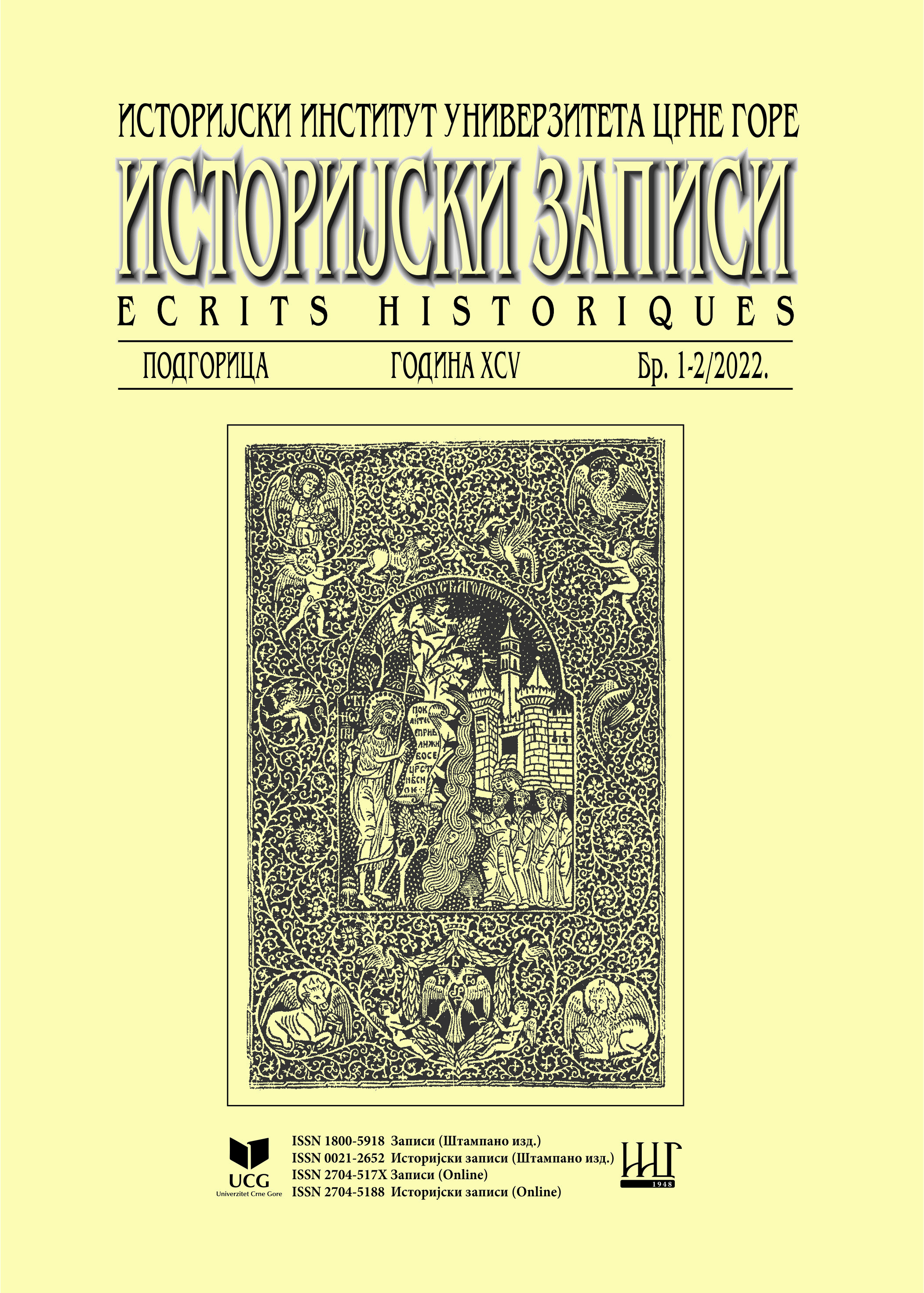SIMBOLIKA 1941. GODINE I DRUGOG SVJETSKOG RATA U POLITIČKOM DISKURSU CRNE GORE OSAM DECENIJA KASNIJE
Symbolism of 1941 and World War II in the
Political Discourse of Montenegro Eight Decades Later
Author(s): Radenko ŠćekićSubject(s): Political history, WW II and following years (1940 - 1949), Present Times (2010 - today)
Published by: Историјски институт Црне Горe
Summary/Abstract: The area of Montenegro, although small and sparsely populated, felt in its worst form the year 1941, occupation, uprising, the beginning of fratricide, crimes. The spiral of mutual crimes began to spread to all conflicting parties and the tragedy of those events and consequences are still alive today, both in media discourse and in historiography. The use ofthe symbolism of certain personalities, their glorification or demonization from that period is often in collision with historical facts. Substitution of theses, misinterpretation, „taking out of context” – represent a general trend of political and media abuse of the Second World War in Montenegro eight decades later. There is a noticeable tendency to label and qualify public figures, political entities and even entire ethnic or religious groups in a negative context, that they are allegedly fascist, genocidal, pro-Ustasha, pro-Chetnik and the like – which is becoming a commonplace in the media and political life.
Journal: Историјски записи
- Issue Year: 2022
- Issue No: 1-2
- Page Range: 189-201
- Page Count: 12
- Language: Slavic (Other)

